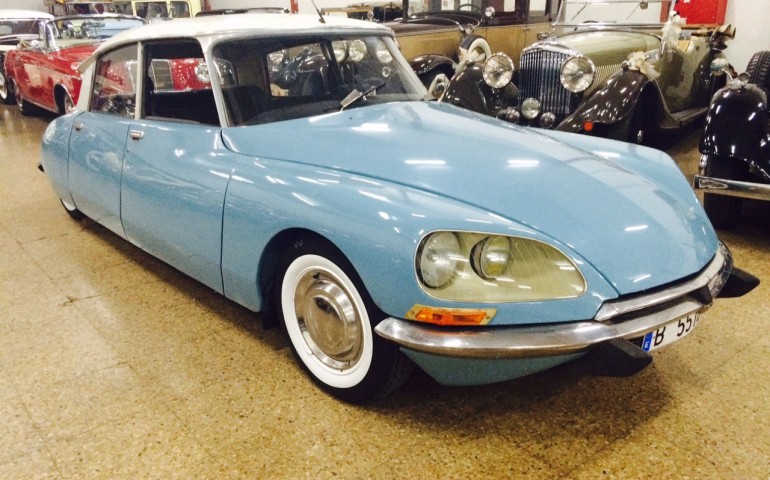The Citroën DS, also known as the Citroën Tiburon, was first introduced at the Paris Motor Show in 1955. It was sold for two decades, and was undoubtedly one of the most beautiful cars ever. There were three versions of this model, the DS 19, the DS 21 and the DS 23. These models could be differentiated by their fronts, their headlights and their engine power.
It was designed by the Italian Flaminio Bertoni, in collaboration with the aeronautical engineer André Lefebvre and the hydraulics specialist Paul Majes. Its external and internal design used new materials such as the combination of plastic covered with fiberglass. It also used state of the art equipment such as seat adjusters, 4 fairing headlights, 2 main beams and directional lights, among other features. The interior had an original single-arm steering wheel and all the buttons on the dashboard were aligned and integrated, making up great ergonomics in the interior as a whole.
But what really stood out in this car’s creation was its internal mechanics, a central high-pressure hydraulic system dedicated to suspension, steering, brakes and its four speeds, called hydropneumatic suspension. The oil, driven by a high-pressure oil pump, was mixed with an inert gas, nitrogen, which provided the spring and shock absorber functions. This system was meant to keep a constant distance from the ground, which reduced roll and pitch movements, giving the vehicle excellent aerodynamics.
The original hydropneumatic system used EVOO (they called it liquide hydraulique vegetal, LHV). Therefore, EVOO participated as an essential element in the design, development, and elaboration of the original DS 19.
They referred to it unofficially as Green Oil. It was the only fluid, due to its characteristics, of being able to adapt to this innovative machine. It maintained this position until years later as it was replaced by an oil of synthetic origin, known as liquide hydraulique synthétique, LHS. Then, in 1967, Citroën introduced a new LHM (Liquide Hydraulique Minéral) mineral oil that was less harsh on the system. However, this change did not take place until January 1969 in the USA and Canada, due to local regulations.
However, from 1955 to 1975, the models DS 19, 21 and 23 continued to use EVOO as its master liquid in its hydropneumatic system, due to its viscosity and other such things. Later then, it was replaced by the manufacturer, and was only recommended in exceptional situations and needs.
Thanks to its aerodynamics, the Citroën DS took part in numerous rallies, winning in all types of races on snow, ice, race tracks and asphalt alongside some of the great drivers of the time. Thanks to its speed, it managed to save the president of the French Republic after a bloody gunfight in 1962 attack, in which the car was pierced by bullets and had its tires destroyed. Even still, it was able to get away, thanks to its great great manoeuvrability and high speed.

